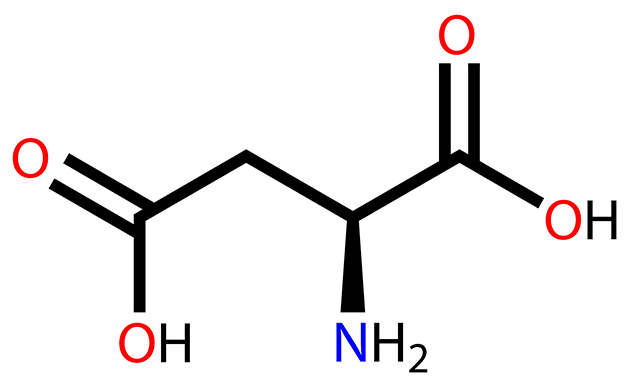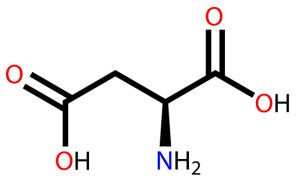
Aspartic acid sources, health benefits and uses
Tuesday, September 12, 2017 by Frances Bloomfield
http://www.naturalpedia.com/aspartic-acid-sources-health-benefits-and-uses.html

Aspartic acid, also known as aspartate, is one of 22 proteinogenic amino acids, meaning it’s an amino acid that is biosynthetically incorporated into proteins during the process of translation. Due to being a non-essential amino acid, the body is capable of producing aspartic acid within the liver. Aspartic acid is known for manifesting in two forms: L-aspartic acid and D-aspartic acid. While D-aspartic acid has a limited role in the body’s numerous functions, L-aspartic acid is the form of aspartic acid that is incorporated into proteins.
Deficiencies of aspartic acid are rare and are typically present in individuals struggling with an eating disorder, suffering from malnutrition, or are on low-protein diets. A sufficient lack of calcium and magnesium have been associated with low aspartic acid levels too. Aspartic acid deficiency is usually marked by poor physical ability, chronic fatigue, and weakened stamina.
On the other hand, excessive intake of aspartic acid may result headaches, diarrhea, and damaged neurons due to the overproduction of neurotransmitters.
This amino acid can be found in supplements, protein powder bars, and energy drinks marketed to athletes and bodybuilders. In nature, aspartic acid is present in dairy, sugar cane, avocado, seafood, sugar beet molasses, oats, and poultry.
Medicinal uses for aspartic acid
Aspartic acid is largely known for the its positive impact on metabolism, and as such is used as a treatment for chronic fatigue. This amino acid works by increasing the amount of chemical fuel being generated by cells. The higher the amount of chemical fuel coming from cells, the more energy an individual has. Aspartic acid has even been linked to improved stamina and endurance in athletes.
Aspartic acid can be useful for individuals suffering from poor concentration. Similar to cells, aspartic acid increases the amount of nicotinamide adenine dinucleotide (NADH) present in the brain. NADH powers cellular activity, and in the case of the brain, it facilitates the increased generation of chemicals and neurotransmitters that are necessary for mental functioning. Moreover, aspartic acid can assist in the removal of ammonia, a toxin that has been found to be harmful to the liver, nervous system, and the brain.
Another important role that aspartic acid plays is in gluconeogenesis, or the fabrication of glucose from non-carbohydrates. Aspartic acid helps ensure that the blood sugar levels don’t drop too low and result in hypoglycemia, which is more likely to occur during fasting, low-carbohydrate dieting, or after intense exercise.
Body systems supported by aspartic acid
In addition to ammonia, aspartic acid removes many other excess toxins that can cause serious damage to the body.
As was previously mentioned, D-aspartic acid has a limited biological role, but it contributes towards vital bodily functions nonetheless. According to PlanetAyurveda.com, D-aspartic acid helps boost testosterone production in men and encourages ovulation in women, as well as regulates menstruation. This makes D-aspartic acid important for the reproductive systems of both sexes. Furthermore, L-aspartic acid stimulates prolactin secretion and is thus important for the production of milk.
Aspartic acid can strengthen the immune system by doubling the amount of antibodies and immunoglobulins being created by the immune system itself.
One other essential function of aspartic acid is in the transportation of minerals to cells for the formation of healthy DNA and RNA.
Where to learn more
Summary
Aspartic acid is a proteinogenic, non-essential amino acid most known for being used to prevent or treat chronic fatigue, poor concentration, and hypoglycemia to an extent. It protects the brain, liver, and nervous system from damage by toxins like ammonia. Aspartic acid supports the reproductive and immune systems too.
Sources include:
AminoAcidStudies.org
AminoAcidsGuide.com
EatingDisorderPro.com
PlanetAyurveda.com
Tagged Under: Tags: Aspartic acid






